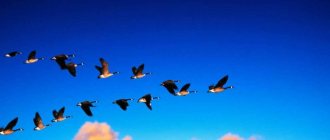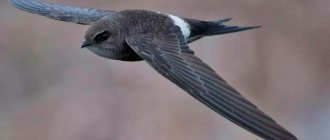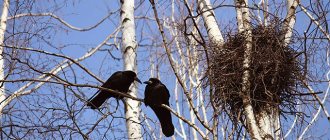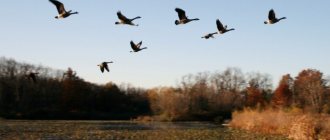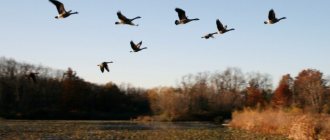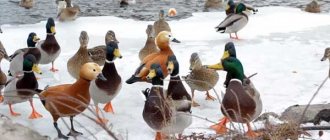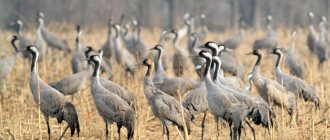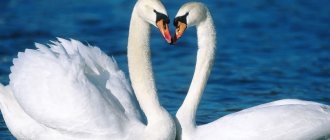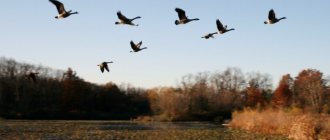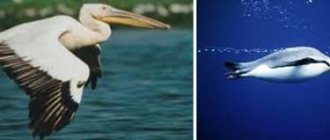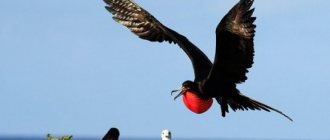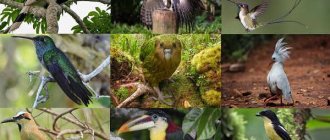Wonderful pictures with migratory and wintering birds. Which birds remain to spend the winter in their homeland, and which ones fly away?
Walking through a park or forest, we listen to birds singing and often simply don’t think about which bird trills so nicely. There are birds that live in our area all year round, but there are also those that fly to “warmer climes” in the fall.
Wild ducks in the sky
The fact is that in winter it is very difficult for birds to find food for themselves, because insects, berries and grains become scarce, and when snow falls, it is almost impossible to find them at all. And different species of birds solve this problem in different ways: migratory birds fly hundreds and even thousands of kilometers to warmer countries, while sedentary birds adapt to our harsh winters.
A tit in the snow, which apparently wants to eat some seeds
Settled, wintering birds: list, photos with names
To help the birds that remain over the winter find food, feeders are hung. And it is quite possible that they will be of interest to the following visitors:
- Sparrow . Noisy sparrows that fly in flocks may well become the first visitors to the feeder.
flock of sparrows
- Tit. Tits are in many ways not inferior to sparrows; they quickly rush to feed in feeders. But compared to sparrows, tits are endowed with a more gentle disposition. Interestingly, in the summer the tit eats almost as much food as it weighs. You can often see mixed flocks of both sparrows and tits at feeders.
Tit with a piece of bread
Sparrows and tit
- Gaichka . A close relative of the tit. However, the chickadee's breast is not yellow, but light brown. The chickadee also differs from other tits in that it makes a hollow in a tree to make a nest in it.
The chickadee is a special type of tit
- Crow. Ravens are often confused with rooks. It is known that in the western part of Russia crows are very rare. Therefore, if you live in the European part of Russia and see a black bird emitting a piercing croak, then most likely it is a rook.
Black Crow
- Pigeon. The distribution and lifestyle of pigeons was largely influenced by people who simply brought them with them to different parts of the Earth. Now pigeons are found on all continents except Antarctica. Pigeons easily exchange rocks, which are their natural habitat, for man-made structures.
The nodding gait of pigeons is due to the fact that this makes it easier for them to examine the object of interest to them.
- Woodpecker. In the warm season, woodpeckers feed mainly on insects, which they get from under the bark of trees, and in the cold winter, they can also feed on plant foods: seeds and nuts.
Woodpeckers love to eat seeds from pine and spruce cones.
- Magpie. The magpie is considered a bird of high intelligence; it is capable of expressing a lot of emotions, including sadness, and can recognize its reflection in the mirror. It is interesting that not only its fellow birds react to the alarming cry of a magpie, but also other birds, as well as wild animals, in particular bears and wolves.
Magpie - wintering bird
- Owl . Owls come in different varieties, large and small, and there are more than 200 species in total. These birds are endowed with acute vision and excellent hearing, which allows them to lead a nocturnal lifestyle. It is interesting that the tufts on the owl's head are not ears, the real ears of owls are hidden in the feathers, and one of them is directed upward, and the other downwards, in order to better hear what is happening above the head and on the ground.
Owl is a night bird
- Owl. This bird is also considered an owl and is a close relative of other owls.
Owl
- Tawny owl. A rare owl that lives mainly in mountainous areas in northern latitudes. The name of the bird, according to different versions, means “inedible” or “insatiable.”
Tawny Owl
- Jackdaw. Externally, jackdaws are similar to rooks and crows; moreover, there are mixed flocks in which all three species of birds can be seen. However, the jackdaw is smaller in size than the crow. And if you are lucky enough to observe a jackdaw up close, you can easily recognize it by the gray color of some of its feathers.
Jackdaws really like shiny objects
- Nuthatch. This little bird climbs tree trunks very deftly. In summer, nuthatches hide seeds and nuts in the bark, and in winter they feed on these supplies.
Nuthatch on a birch tree
- Crossbill. Like the nuthatch, this bird is excellent at climbing trees and can hang upside down on branches. Crossbill's favorite food is seeds from spruce and pine cones. This bird is remarkable in that it can hatch chicks even in winter, but only if there is enough food.
Crossbill on spruce branches
- Bullfinch. Only males have bright red plumage on the chest; females look much more modest. Bullfinches are more often seen in winter, because due to lack of food, they are drawn to people. In summer, bullfinches prefer wooded areas and behave inconspicuously, so they are not easy to see.
Pair of bullfinches
- Waxwing . A bird with beautiful plumage and a singing voice. In summer it feeds mainly on insects and likes to settle in coniferous forests. In winter, the waxwing moves to more southern regions of the country and is often found in cities. In the cold season, rowan and other fruits become the main food for birds.
Waxwing on a rowan branch in winter
- Jay. A large bird, which, however, can fly to feast on a feeder hung by people. In the summer it is rarely seen in the city, but closer to winter the bird begins to reach out to human habitation.
Jay in winter
- Kinglet. One of the smallest birds, the weight of an adult male is only 5-7 grams. Kinglets are relatives of sparrows.
Kinglet - forest dweller
- Pheasant . A large bird that is a favorite trophy for many hunters. Pheasants can fly, but most often move on foot.
Pheasant
- Hazel grouse . It is also an object of hunting, despite the fact that this bird is quite small. The weight of an adult hazel grouse rarely reaches 500 g. Interestingly, the largest population of these birds lives in Russia.
The hazel grouse is a bird that is related to the black grouse
- Black grouse. Another bird that is related to hunting. Black grouse are found at the edge of the forest and in the forest-steppe.
Grouse
- Sokol . It is considered one of the smartest birds on the planet and one of the best hunters. The falcon is capable of working in tandem with a person, but it is very difficult to tame it.
Falcon in flight
- Hawk . Like the falcon, it is a bird of prey. A hawk's vision is 8 times sharper than a human's. And rushing after prey, the hawk can reach speeds of up to 240 km/h.
Hawk
Resident birds
Blue Tit (Cyanistes cyanus)
The blue tit belongs to the tit bird family and, like all its relatives, lives sedentary in the Chelyabinsk region. This bird undertakes small migrations within the boundaries of its range only in the frosty winter, when it is forced to go in search of food. The blue tit differs from the common blue tit in that it has a snow-white “cap” on its head. It is quite difficult to observe this baby because of its secretive lifestyle in dense bushes along the banks of reservoirs, in the dense undergrowth of forests of various types or along the banks of swamps. In addition, the blue tit is a rather silent bird, occasionally making quiet ringing sounds “tsirrr-tsirrr”. It feeds on both plant and animal foods depending on the season.
Pigeon (Columba palumbus)
Pigeons are fairly large pigeons, reaching 40 cm in length and weighing about 1 kg. Their plumage is bluish-gray, the chest has a pronounced red tint, and the neck with an emerald metallic tint is decorated with two snow-white spots. During the flight, white stripes on the wings of the wood pigeon become visible. There is also a transverse white stripe at the bottom of the tail. The beak is yellow. The wood pigeon leads a sedentary lifestyle in the forests, where it hides among the dense foliage, and when it hears someone approaching, it immediately hides, becomes silent and does not move. The wood pigeon only reveals itself when it takes off, as it begins to flap its wings deafeningly loudly. At dawn you can also hear the voice of this bird, which is represented by the dull sounds “kruu-kuuu-kuuuu”.
Great-footed owl (Aegolius funereus)
In the coniferous and mixed forests of the Chelyabinsk region, such a feathered predator from the owl family as the tiger-footed owl lives. This bird has a large, wide head, a clearly defined facial disc, and small feather “ears.” The dimensions are small: body length is about 25 cm, wingspan reaches 45 cm, weight up to 200 g. Females are always slightly larger than males. The bird has long wings and a short tail. The feathering on the legs reaches to the claws, which was the reason for the name of the species. The ragged owl's plumage is brown with white spots, especially pronounced in the head, neck and shoulder areas. The underparts are light gray with brown patterns. The beak is yellow. The tiger-footed owl hunts rodents and small birds.
Photo:
photocentra.ru, o-prirode.ru
Migratory and nomadic birds: list, photos with names
- Rook. Rooks differ from crows in having a gray-yellow beak. In Kuban and Ukraine, you can see how in the fall rooks gather in huge flocks, so large that the sky seems black from the birds soaring in it - these are rooks that fly south. However, rooks are classified as migratory birds only conditionally, some of them remain to winter in central Russia, some winter in Ukraine, and only some birds fly to the warm shores of Turkey for the winter.
The sky in which rooks circle
- Rooks love to fly to freshly dug ground; sometimes they fly right behind a plowing tractor in order to have time to get as many worms and larvae as possible from the dug up ground.
Rook
- Nightingale. This inconspicuous bird with a singing voice loves warmth, and therefore flies south in the fall. And for wintering, our native nightingales chose hot Africa. These birds fly to the eastern part of the continent - Kenya and Ethiopia - for the winter. However, local residents cannot enjoy their singing, because nightingales sing only during the mating season, which takes place in their homeland.
Nightingale
- Martin. Swallows love rocky terrain; they often settle on the steep walls of quarries that people have dug. However, our winters are too harsh for swallows and therefore in the fall they fly to the southern part of Africa, far from us, or to Tropical Asia.
Swallow in flight
- Chizh . Like the rook, it is a migratory bird that arrives early and winters nearby: in the Caucasus, Kazakhstan and southern Europe. Externally, siskins are inconspicuous, their gray-green feathers are absolutely not noticeable against the background of the branches. The bird's temperament matches its appearance: quiet and meek.
Gray-green plumage of a siskin
- Goldfinch. In Europe it is a wintering bird, however, in Russia goldfinches can only be seen in summer. By winter, goldfinches gather in flocks and move to lands with a warmer climate. Goldfinches are close relatives of siskins.
The goldfinch is one of the most colorful birds
- Wagtail. A slender bird that runs quickly along the ground and shakes its tail with every step. Wagtails spend the winter in eastern Africa, southern Asia, and sometimes southern Europe.
Wagtail
- Quail. The only bird from the Galliformes order that is migratory. The weight of an adult quail is not so large and amounts to 80-150 g. In summer, quails can be found in fields sown with wheat and rye. Quails winter far beyond the borders of our homeland: in southern Africa and southern Asia, on the Hindustan Peninsula.
Quail in the grass
- Drozd . The song thrush, with its sweet trills, creates worthy competition for the nightingale. And his appearance, like that of the nightingale, is inconspicuous. In winter, blackbirds become Europeans: Italy, France and Spain are their second homeland.
song thrush
- Lark . Larks return from warm countries very early; sometimes already in March you can hear their sonorous song, which becomes a harbinger of spring warmth. And larks spend the winter in Southern Europe.
Lark in spring
- Seagull . With the onset of cold weather, seagulls living on the coasts of the northern seas migrate to the Black and Caspian Seas. But over the years, seagulls are increasingly drawn to people, and increasingly remain to spend the winter in cities.
Seagull on the warm coast
- Swift . Swifts winter in Africa, and fly to its equatorial part or even go to the southern part of the continent.
Swift
- Starling. Starlings really need birdhouses, since most often they breed their offspring in them. And our starlings go to Southern Europe and East Africa for the winter.
Starling This bizarre black cloud is a flock of starlings returning home
- Chaffinch . Finches from the western part of the country winter mainly in Central Europe and the Mediterranean, and finches that live near the Urals in the summer go to winter in Southern Kazakhstan and the southern regions of Asia.
Chaffinch - a noisy inhabitant of the forest
- Heron . It is quite difficult to determine where herons spend the winter; some of them travel huge distances to South Africa, some winter in the Crimea or the Kuban, and in the Stavropol Territory, herons sometimes even remain for the winter.
Heron in a pond
- Crane . These birds are monogamous, and once having chosen a partner, they remain faithful to him throughout their lives. Cranes settle in swampy areas. And their wintering places are as diverse as those of herons: Southern Europe, Africa and even China - in all these parts of the world you can find cranes that have flown from Russia to spend the winter.
Cranes
- Stork . In Russia there are black and white storks. White storks build huge nests, up to one and a half meters wide, and make very long flights to the south. Sometimes they cross half the planet and reach South Africa, a country located in the very south of Africa.
Storks nest
- Swan . The swan is a bird that represents devotion and romance. Swans are waterfowl, so for wintering they choose places near water, often the Caspian or Mediterranean Sea.
Swan mother and her babies
- Duck . Wild ducks, as a rule, do not fly far in winter and remain in the vast expanses of post-Soviet states. It is noteworthy that their domestic relatives also begin to worry in the fall and sometimes try to fly away, sometimes they even fly over fences and fly short distances.
wild ducks
- Cuckoo . Cuckoos live in forests, forest-steppe, and steppe. The vast majority of cuckoos fly to tropical and South Africa for the winter; less commonly, cuckoos winter in South Asia: India and China.
Cuckoo
- Oriole . A small bird with a singing voice and bright plumage that flies to the tropics for the winter.
Oriole
- Robin . They wake up at dawn and are among the first to start the morning song. This little songbird used to be called a robin. Robins fly to Southern Europe, North Africa and the Middle East to spend the winter and are among the first to return home.
Robin
Harry Potter's Owl and the Southern "Check"
The birds of the Tver region will surprise and delight with their appearance. Aren’t the predatory golden eagle, the wise eagle owl, and the white owl beautiful – like something out of “Harry Potter”? Remember how the wizard grieved over the loss of his faithful friend? And there are very few of these birds left in the region. Owls only fly in flight. They are certainly worth taking care of.
There are no endemics, that is, species that are characteristic only of the Tver region.
But on the territory of the province there are species that can rarely be found so close. The same snowy owl lives mainly in the polar regions. But the turtledove prefers Southern Europe. It also exists in the south of Russia. But she also appeared in Tver. Her cry, similar to “chekushka, chekushka,” can often be heard in the southern industrial zone of the regional center.
There are also birds, the number of which is quite large. This:
- bullfinch;
- siskin;
- crossbills;
- goldfinch;
- black grouse;
- waxwing;
- grouse;
- crow;
- ordinary oatmeal;
- capercaillie;
- jackdaw;
- ordinary lentils;
- wood accentor;
- river cricket;
- magpie;
- snow bunting;
- buzzard;
- hobby;
- wren;
- kestrel;
- yellow;
- crake;
- landrail;
- coot;
- small plover;
- black-headed and glaucous gulls;
- lapwing;
- blackie;
- ducks;
- grey, white-fronted, geese;
- woodcock;
- cuckoo;
- short-eared owl;
- coastline;
- rook;
- hoodie;
- sandpiper sparrow;
- common tern;
- barn swallow;
- oriole;
- yellow and white wagtail;
- forest and meadow pipit;
- funnels;
- common starling;
- Tufted Duck;
- long-eared owl;
- skylark;
- black tern;
- common shrike;
- jay;
- rock pigeon;
- common cuckoo;
- Great Grebe;
- wigeon;
- Rough-legged Buzzard;
- fifi;
- burial ground;
- great bittern;
- gogol;
- black kite;
- meadow and marsh harrier;
- goshawk;
- sparrowhawk;
- gray heron;
- mute swan;
- marsh warbler;
- whooper swan;
- mallard;
- black swift;
- wryneck;
- gray owl, long-tailed, bearded;
- garden and gray warbler;
- miller's warbler;
- Chiffchaff;
- green warbler;
- fieldfare;
- teal;
- common nightingale;
- green mocking;
- Greater and Lesser Spotted, Medium Spotted, and White-backed Woodpeckers;
- carrier;
- song thrush;
- Robin;
- finch;
- greenfinch;
- common redstart;
- puffy;
- field and house sparrow;
- common pika;
- yellow-headed wren;
- meadow mint;
- great tit;
- Shoveler;
- nightingale, etc.
Many of them can be seen even on the streets of Tver, Ostashkov, Vyshny Volochok and other cities in the region.
What is the difference between migratory birds and wintering birds: presentation for preschoolers
Wintering and migratory birds: presentation for preschoolers Slide 2
Slide 3: presentation of migratory birds
Slide 4
Slide 5
Slide 6 Slide 7 Slide 8: presentation of wintering birds Slide 9
Slide 10
Slide 11
Slide 12
Order: Charadriiformes - Charadriiformes
Avdotka - Burhinus oedicnemus
Tules -
Pluvialis squatarola
Golden Plover -
Pluvialis apricaria
Ringed
-
Charadrius hiaticula
Lesser
Plover
Charadrius dubius
Chrystal -
Eudromias morinellus Vanellus vanellus
Himantopus
himantopus
Turnstone -
Arenaria interpres
Oystercatcher - Haema topus ostralegus Blackberry -
Tringa ochropus
Fifi -
Tringa glareola
Sandfly -
Tringa stagnatilis
Great snail -
Tringa nebularia
Herbalist -
Tringa tetanus
Goldfinch -
Tringa erythropus
Carrier -
Actilis hypoleucos
Morodunka -
Xenus cinereus
-
Glareola nordmanni
Round-nosed phalarope
Phalaropus lobatus
Turukhtan -
Philomachus pugnax
Pouter -
Calidris melanotos
Sandpiper -
Calidris minuta
White-tailed Sandpiper -
Calidris temminckii
Redshank -
Calidris ferruginea
Dunlin -
Calidris alpine
Icelandic Sandpiper -
Calidris canutus
Gerbil -
Calidris alba
Mudwing -
Limicola falcinellus
Garcock -
Lymnocryptes minima
Snipe -
Gallinago gallinago
-
Gallinago media
Woodcock -
Scolopax rusticola
Curlew -
menius arquata
Middle Curlew —
Numenius phaeopus
Great godwit —
Limosa limosa
Little godwit —
Limosa lapponica
Little skua —
Stercorarius pomarinus
Short-tailed skua
Stercorarius parasiticus
Long-tailed skua —
Stercorarius longicaudus
Black-headed gull —
Larus ichthyaetus
Little gull —
Larus minutus
ridibundus
K lusha -
Larus fuscus
Herring gull -
Larus argentatus
Laughing Gull -
Larus cachinnans
Seagull -
Larus marinus
Black-headed Gull -
Larus melanocephalus
Common Gull -
Larus canus
Kittiwake -
Rissa trydactyla
Black Tern -
Chlidonias niger
White-winged Tern -
Chlidonias leucopterus
Common Tern -
Sterna hirundo
Little Tern -
Sterna albifrons
Why do migratory birds fly to warmer regions where they spend the winter, and why do they come back?
Winter is a harsh test for birds. And only those who can get food for themselves in harsh conditions remain to spend the winter.
Bullfinch getting seeds
What could be the ways for birds to survive in the cold season?
- Some birds store food for the winter in the summer. They hide plant seeds, nuts, acorns, caterpillars and larvae in grass and cracks in tree bark. Such birds include the nuthatch.
- Some birds are not afraid of people and live near residential buildings. In winter, they find food in feeders and garbage heaps.
- Some birds are predators and feed on rodents. There are birds of prey that can feed on hares, hunt fish, small birds and bats.
Rowan saves many birds from hunger in winter.
If a bird can find food for itself in winter, it means it does not need to go on a tedious and difficult flight to warmer climes in the fall.
Bullfinches peck bread crumbs in a feeder
It would seem that everything is simple, and the only reason for the seasonal migration of birds is the lack of food. But in reality there are more questions here than answers. For example, imagine that a wild duck, which is a migratory bird, is provided with an artificially heated pond and a sufficient amount of food. Will she stay for the winter? Of course not. She will be called on a long journey by a strong feeling that is difficult to explain, called natural instinct.
Wild ducks in the sky
It turns out that birds fly to warmer regions, as if out of habit, because their ancestors did this for hundreds and thousands of years.
Chicks
Another question that requires an answer: why do birds return from warm countries every spring? Ornithological scientists have concluded that the beginning of the return flight is associated with the activation of sex hormones and the beginning of the breeding season. But why do birds fly thousands of kilometers and hatch their chicks exactly where they were born? Poets and romantic people say that birds, like people, are simply drawn to their homeland.
How do migratory birds know where to fly? A question to which to this day there is no clear answer. It has been experimentally proven that birds can navigate in completely unfamiliar terrain and in conditions of limited visibility, when neither the sun nor the stars are visible. They have an organ that allows them to navigate the Earth's magnetic field.
But the mystery remains how young individuals, who have never flown to warm regions before, find their own wintering place, and how do they know the route to fly? It turns out that in birds, at the genetic level, information about the point on the map where you need to fly is recorded and, moreover, a route to it is drawn.
Birds unerringly find their way to their wintering grounds
Order: Crane-like animals - Gruiformes
Demoiselle Crane - Anthropoides virgo
Common Crane -
Grus grus
Water Rail -
Rallus aquaticus
Carolina Crake -
Porzana carolina
Common
Porzana porzana
Porzana parva
Little Crake -
Porzana pusilla
Crake -
Crex crex
Moorhen -
Gallinula chloropus
Coot -
Fulica atra
Bustard —
Otis tarda
Little Bust —
Tetrax tetrax
Which birds are the first and last to arrive in spring?
The rooks are the first to arrive in the spring . These birds return to their homeland in early spring, when the first thawed patches in the snow appear. With their strong beaks, rooks dig out larvae in such thawed areas, which form the basis of their diet.
The last to arrive are the birds, which feed on flying insects. These are swallows, swifts, and orioles. The diet of these birds consists of:
- Komarov
- Much
- Moshek
- Horseflies
- Zhukov
- Cicadas
- Butterflies
Since the emergence of a large number of adult flying insects from larvae requires warm weather and about two weeks of time, the birds that feed on them fly to their homeland after the mass appearance of these insects.
Geese are preparing to fly to warmer climes
When can you see migratory birds in the sky over the Sverdlovsk region
| Seagulls | until April 15 |
| Greylag geese, geese, white-fronted geese | until early May |
| mute swan | until the end of April |
| Whooper swan | from the end of April to the end of May |
| Cranes | from April 15 to mid-May |
| Herons | until April 20 |
| Northern Sandpipers, White-tailed Sandpipers | from early May to early June |
| Turukhtans, sandpipers-sparrows | until mid-May |
| Raptors: white-tailed eagles, kites | until the end of April |
| Swallows | in the end of April |
| Rooks, starlings, greenfinches | until April 20 |
| Swifts | until early June |
What flock of migratory birds promises snow?
geese has flown south , you should expect the first snow to fall. This sign may not coincide with real weather phenomena. So in the north of Russia, geese fly to warmer climes in mid-September, and snow can fall much earlier. Let's say the first snow in Norilsk this year fell on August 25th. In the south, geese fly to warmer climes at the end of October, and sometimes even at the beginning of November. The first snow in these areas may occur around this time. But it all depends on the weather conditions in autumn. Indian summer here can last throughout October.
VIDEO: Geese gather in flocks to fly south
Which bird from the order Galliformes is migratory?
A migratory bird from the order Galliformes is the quail . The quail's habitat extends beyond Russia in the west and south. In the east, these birds live up to the western coast of Lake Baikal. They are widespread in Europe, Western Asia and Africa.
Quail habitat
For the winter they fly south. And they winter in Hindustan, Northern Africa and South-West Asia.
